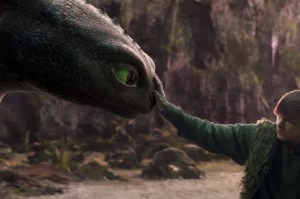Gospel of Mark Fragment Found in Egyptian Garbage Dump Is Not From 1st Century

While some scholars have speculated for the past few years about the possible existence of a first century fragment from the New Testament Gospel of Mark, experts announced last week that the fragment found in an Egyptian garbage dump likely dates back to either the late second or early third centuries.
The Egypt Exploration Society, a British nonprofit excavation organization that works in Egypt and Sudan, reported that a late second or early third century fragment of the first chapter of the Gospel of Mark was published in the most recent volume of the Oxyrhynchus Papyri.
The Oxyrhynchus Papyri is a group of manuscripts that were discovered during the late 19th and early 20th centuries at a spot where ancient inhabitants of the city of Oxyrhynchus dumped their garbage of over 1,000 years.
"The two sides of the papyrus each preserve brief traces of a passage, both of which come from the Gospel of Mark," a statement released last Thursday by the Society explains. "After rigorous comparison with other objectively dated texts, the hand of this papyrus is now assigned to the late second to early third century AD."
Although the publication of the Mark fragment was just announced last week, there has been much conversation about the fragment stemming from the fact that Oxford University papyrologist Dirk Obbink showed the fragment to visitors between 2011 and 2012.
One visitor, Dan Wallace of Dallas Theological Seminary, announced in a debate with agnostic scholar Bart Ehrman in 2012 that he had seen a copy of what could likely be a first century Gospel of Mark papyrus fragment.
Wallace later took to his blog to write about the fragment, saying that "a world-class paleographer had dated this manuscript and that he was pretty darn sure that it belonged to the first century." Wallace's post provided a sense of hope that this particular fragment could be the oldest New Testament fragment ever discovered.
In its statement, the Egypt Exploration Society confirmed that the fragment that was published is the same one discussed in the media in recent years.
"This is the same text that professor Obbink showed to some visitors to Oxford in 2011–'12, which some of them reported in talks and on social media as possibly dating to the late first century AD on the basis of a provisional dating when the text was catalogued many years ago," the statement reads.
The society's statement adds that no other New Testament texts in its collection have been identified as earlier than the third century.
Despite the fact that the fragment is not from the first century, the Daily Beast notes that the fragment found in Oxyrhynchus is still one of the earliest discovered fragments from the Gospel of Mark, which some believe to be the earliest of the canonical Gospels.
Wallace took to his blog last week to offer an apology.
"In my debate with Bart, I mentioned that I had it on good authority that this was definitely a first century fragment of Mark," Wallace wrote. "A representative for who I understood was the owner of FCM urged me to make the announcement at the debate, which they realized would make this go viral."
"However, the information I received and was assured to have been vetted was incorrect," Wallace continued. "It was my fault for being naïve enough to trust that the data I got was unquestionable, as it was presented to me. So I must first apologize to Bart Ehrman, and to everyone else, for giving misleading information about this discovery."
Although Wallace states that he did not knowingly announce inaccurate facts, he admits that he should have been more careful than to trust sources without personal verification.
Excavation at Oxyrhynchus began in 1897 with archaeologists Bernard Grenfell and Arthur Hunt. Thanks to Grenfell and Hunt, over 500,000 fragments of have been discovered and many of them housed in the Egypt Exploration Society Sackler Library in Oxford.
According to The Independent, scholars were able to transcribe just about 5,000 of those texts between 1898 and 2012.
In 2014, The Ancient Lives project was launched to give people across the world who have knowledge of the ancient Greek alphabet to look at the fragments online to try and transcribe what is written on them.
One of the pieces of text discovered through The Ancient Lives project is a long-lost rendition of the Book of Exodus, according to The Independent. The book was written in the second century in Alexandria.




























